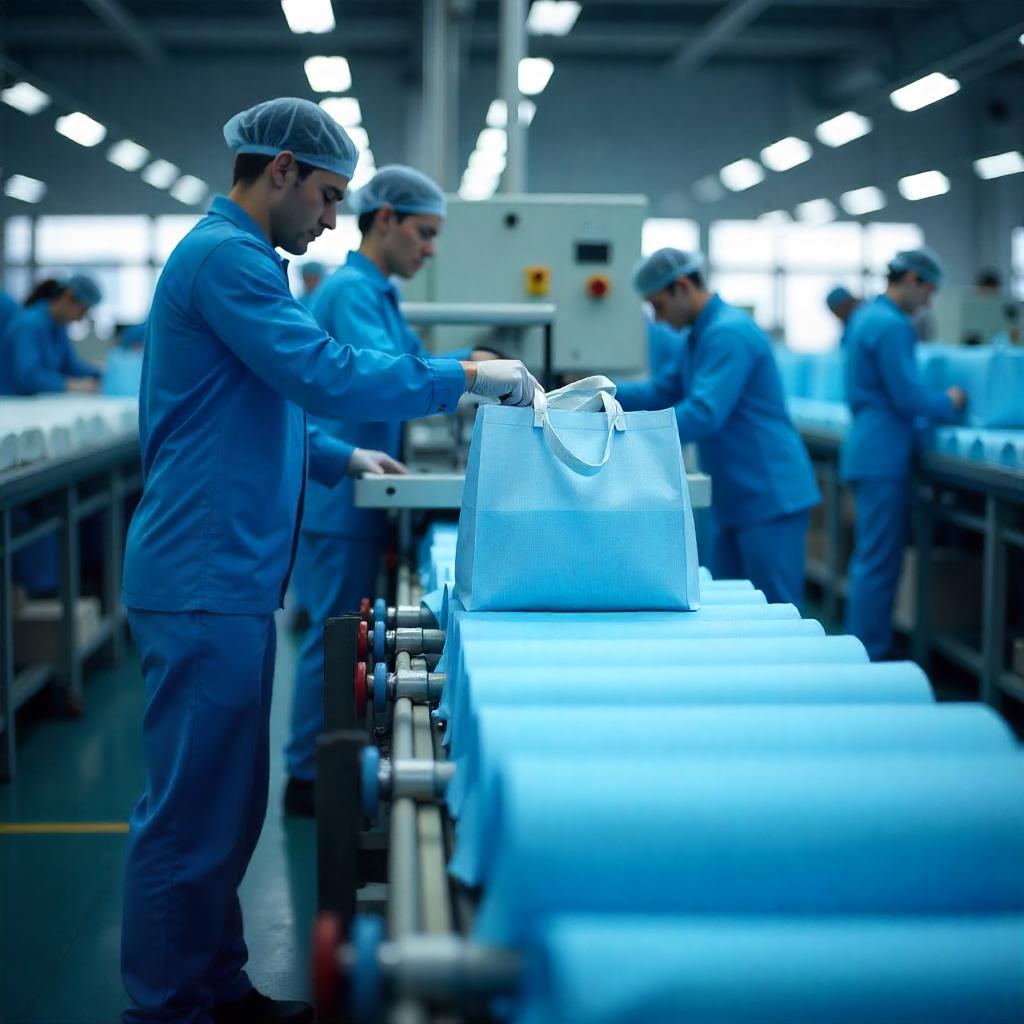In today’s world, sustainability is more than just a trend—it’s a necessity. With increasing environmental concerns and a global push to reduce plastic waste, businesses and consumers alike are searching for greener alternatives. Non woven bags have emerged as an excellent eco-friendly option, and non woven bag making machines are at the forefront of this transformation.
These machines have revolutionized the packaging industry by enabling mass production of reusable, durable, and biodegradable bags. In this blog, we’ll explore the importance of non woven bags, the working process of non woven bag making machines, and their impact on the packaging industry.
Why Are Non Woven Bags Gaining Popularity?
1. Eco-Friendly Alternative to Plastic Bags
Traditional plastic bags contribute significantly to pollution and take hundreds of years to decompose. Non woven bags, made from polypropylene (PP) fibers, are recyclable, biodegradable, and reduce dependency on single-use plastics.
2. Durability and Strength
Unlike thin plastic bags, non woven bags are strong, durable, and can be reused multiple times. Their robust nature makes them ideal for carrying groceries, clothes, books, and other heavy items.
3. Customizable and Cost-Effective
Businesses prefer non woven bags because they can be customized with logos, branding, and various designs. They serve as an excellent marketing tool while being cost-effective in the long run.
4. Government Regulations on Plastic Ban
Many countries have imposed strict regulations on plastic usage. The demand for non woven bags has surged due to government initiatives promoting sustainable alternatives.
How Do Non Woven Bag Making Machines Work?
Non woven bag making machines use advanced automation technology to produce high-quality bags in bulk. These machines offer precision, speed, and efficiency while reducing labor costs. Here’s how they work:
1. Feeding and Unwinding
The process starts with feeding non woven fabric rolls into the machine. These rolls pass through tension controllers to ensure smooth unwinding.
2. Printing and Cutting
If required, the fabric is printed with customized logos or designs before being cut into desired shapes and sizes using automated cutting mechanisms.
3. Folding and Sealing
The cut fabric is then folded and sealed using ultrasonic technology or heat sealing. This ensures strong and durable seams without using glue or thread.
4. Handle Attachment (Optional)
Some machines come with handle attachment systems, where handles are automatically added for extra convenience and style.
5. Final Inspection and Stacking
After completion, the bags undergo quality checks to ensure proper sealing and finishing. They are then stacked and packed for distribution.
Types of Non Woven Bag Making Machines
There are different types of non woven bag making machines available based on functionality and production requirements:
1. Fully Automatic Non Woven Bag Making Machine
- High-speed and efficient
- Requires minimal human intervention
- Ideal for large-scale production
2. Semi-Automatic Non Woven Bag Making Machine
- Requires some manual assistance
- Suitable for small to medium-scale production
- Cost-effective option for startups
3. Handle Attachment Machine
- Specifically designed to add handles to non woven bags
- Enhances the convenience and appeal of bags
4. Printing Machine
- Used to print logos, brand names, and designs on bags
- Available in flexographic, screen, and digital printing options
Benefits of Using Non Woven Bag Making Machines
1. High Production Efficiency
These machines can produce thousands of bags per hour, ensuring bulk production with minimal wastage.
2. Reduced Labor Costs
Automated processes reduce the need for manual labor, thereby cutting down costs and increasing profitability.
3. Precision and Consistency
Non woven bag making machines ensure uniform quality, precise cutting, and accurate printing, which enhances brand value.
4. Eco-Friendly Manufacturing
The process does not involve harmful chemicals, reducing carbon footprints and promoting green manufacturing.
5. Customization Flexibility
Businesses can produce various bag sizes, designs, and handle types to cater to different customer needs.
How Non Woven Bag Making Machines Are Transforming the Packaging Industry
1. Meeting Growing Market Demand
With increasing demand for sustainable packaging solutions, non woven bag making machines are helping manufacturers keep up with large-scale orders efficiently.
2. Supporting Small Businesses and Startups
Many small businesses and startups are investing in these machines to produce eco-friendly bags locally, reducing reliance on imports.
3. Encouraging Brand Promotion
Companies are using non woven bags as promotional tools, replacing traditional plastic bags with stylish, branded alternatives.
4. Boosting Employment Opportunities
The growing demand for non woven bags has created job opportunities in production, sales, and marketing sectors.
Things to Consider Before Investing in a Non Woven Bag Making Machine
1. Production Capacity
Choose a machine that meets your production requirements, whether for small-scale or large-scale operations.
2. Automation Level
Fully automatic machines require less labor but have higher initial costs, while semi-automatic machines are more affordable but need manual assistance.
3. Customization Features
Look for machines that allow flexible design options, including printing, handle attachment, and different bag styles.
4. Warranty and After-Sales Support
Ensure the manufacturer provides good after-sales service, spare parts availability, and technical support.
5. Cost and ROI
Analyze the cost of the machine and calculate the return on investment (ROI) based on production efficiency and market demand.
Conclusion
Non woven bag making machines are truly game changers in the packaging industry, providing an eco-friendly, durable, and cost-effective solution to replace harmful plastic bags. With rising global awareness and stricter environmental policies, investing in these machines is a smart move for businesses looking to contribute to sustainability while maximizing profits.
By adopting non woven bag manufacturing, businesses can not only reduce their carbon footprint but also build a strong brand image in the competitive market. The future of packaging is green, and non woven bag making machines are leading the way!





Comments